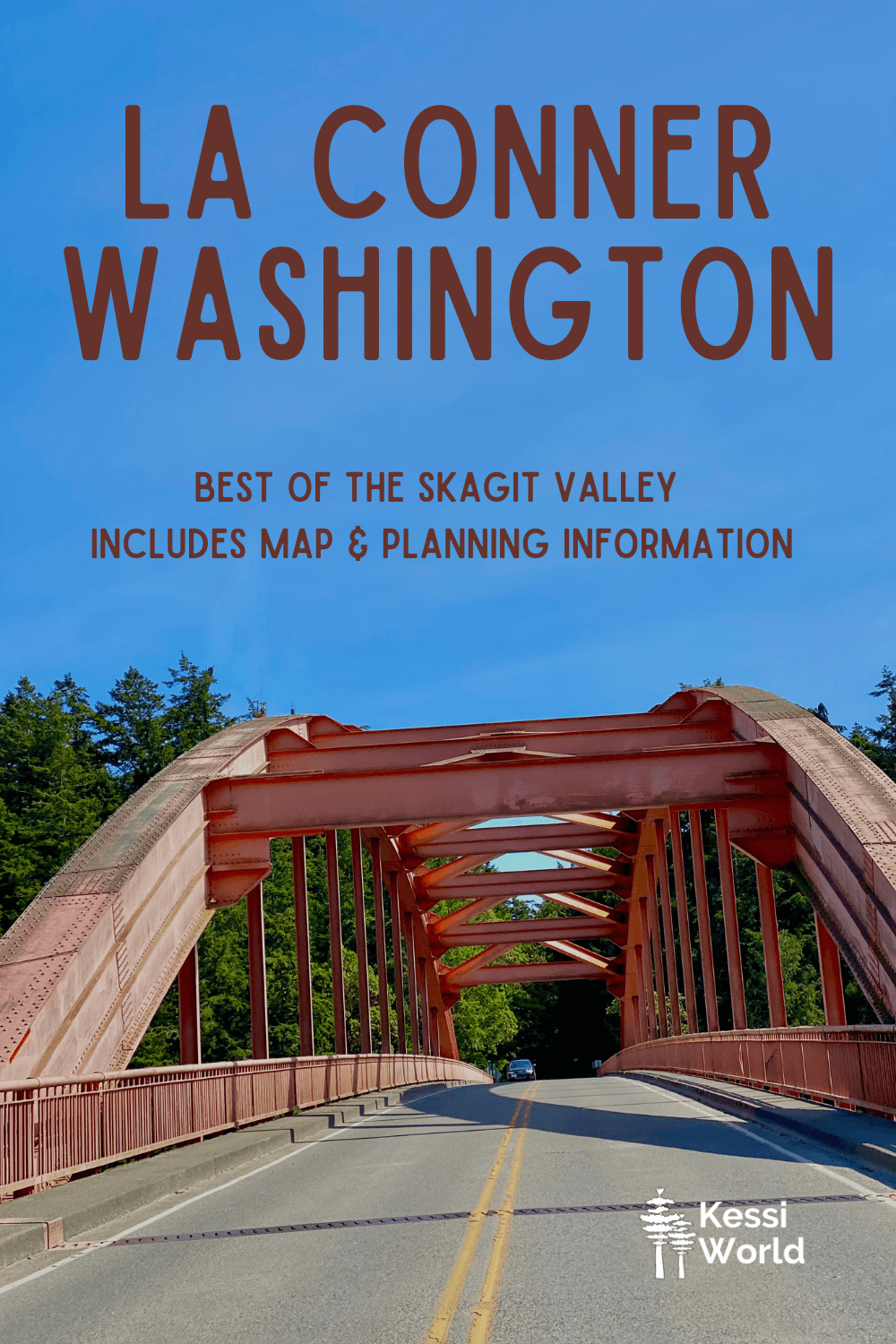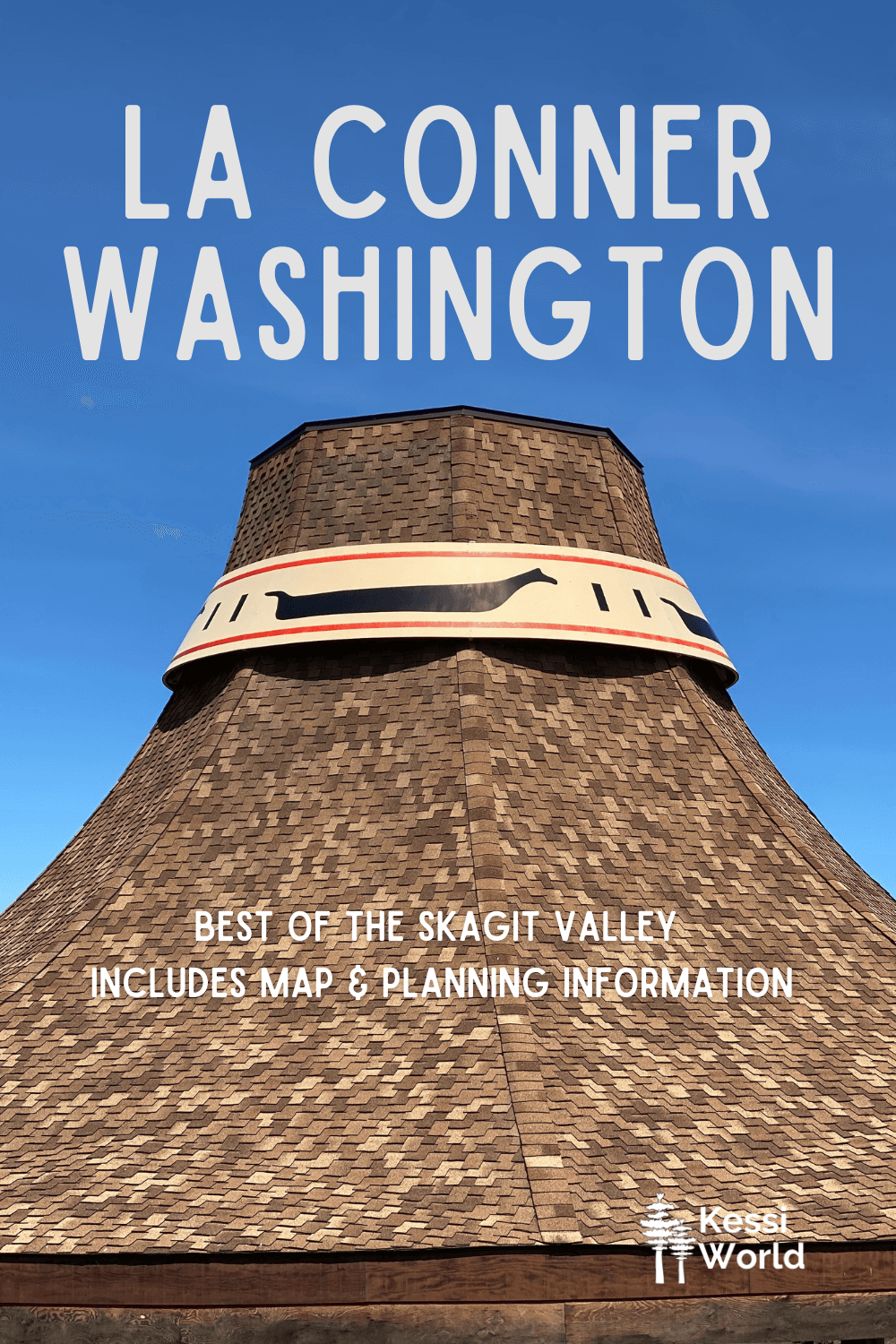
An hour north of the bustling metropolis of Seattle, Washington, lies the bucolic Skagit Valley, where Mt. Baker and the North Cascade Mountains keep command of the scenery and quaint red barns and farm stands offer fruit and local honey. While more visible towns like Mount Vernon and Burlington, WA, enjoy a symbiotic relationship with the steady vehicles of commerce along I5, which slices a hole through the valley, an under-appreciated experience remains only a few miles away; the compact pioneer town big on community spirit — La Conner, Washington.
Keep reading for all the great things in and around La Conner, Washington
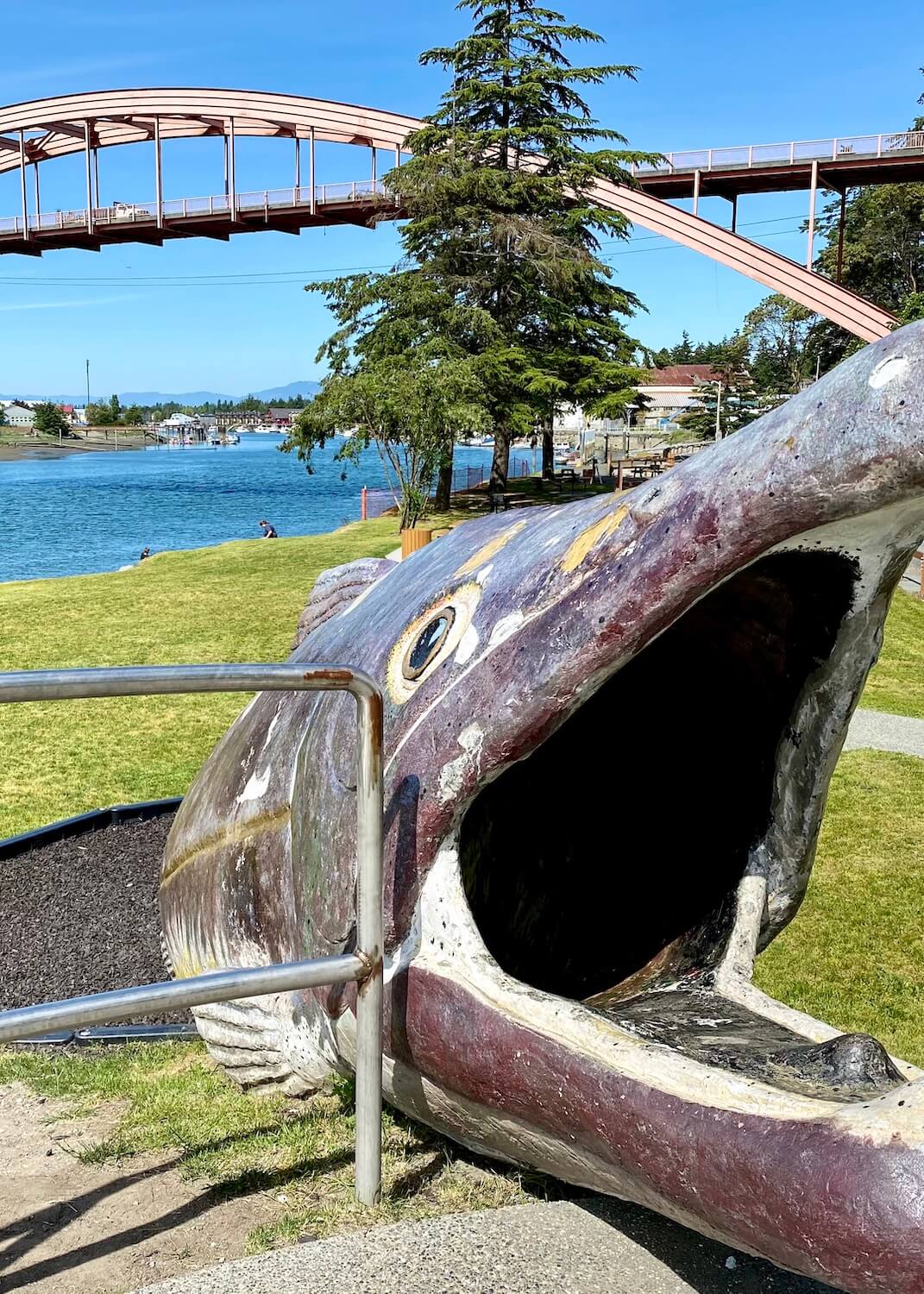
La Conner, Washington makes for a great day-trip from Seattle or weekend getaway in its own right. If you’d like to know how to weave this into a more extended road-trip I’ve also written an article about Anacortes, WA, and Deception Pass State Park that includes a stop in this pioneer town. This Skagit Valley highlight is also a treat on the Seattle to Vancouver drive, helping to break up the freeway journey. No matter your amount of time or whim, La Conner, Washington can provide the ideal mix of scenery, country living, and quality experiences.
La Conner, Washington Table of Contents:
- The Swinomish Tribe
- Historic points of interest
- Tulips to fruit stands
- La Conner Washington food scene
- Art and local museums
- Sail the Salish Sea
- Day trips from La Conner
- Deception Pass State Park
- Anacortes, Washington
- Seaside oysters and Larrabee State Park
- Map of La Conner area
- If you go — planning information
The Swinomish Tribe and Louisa Conner
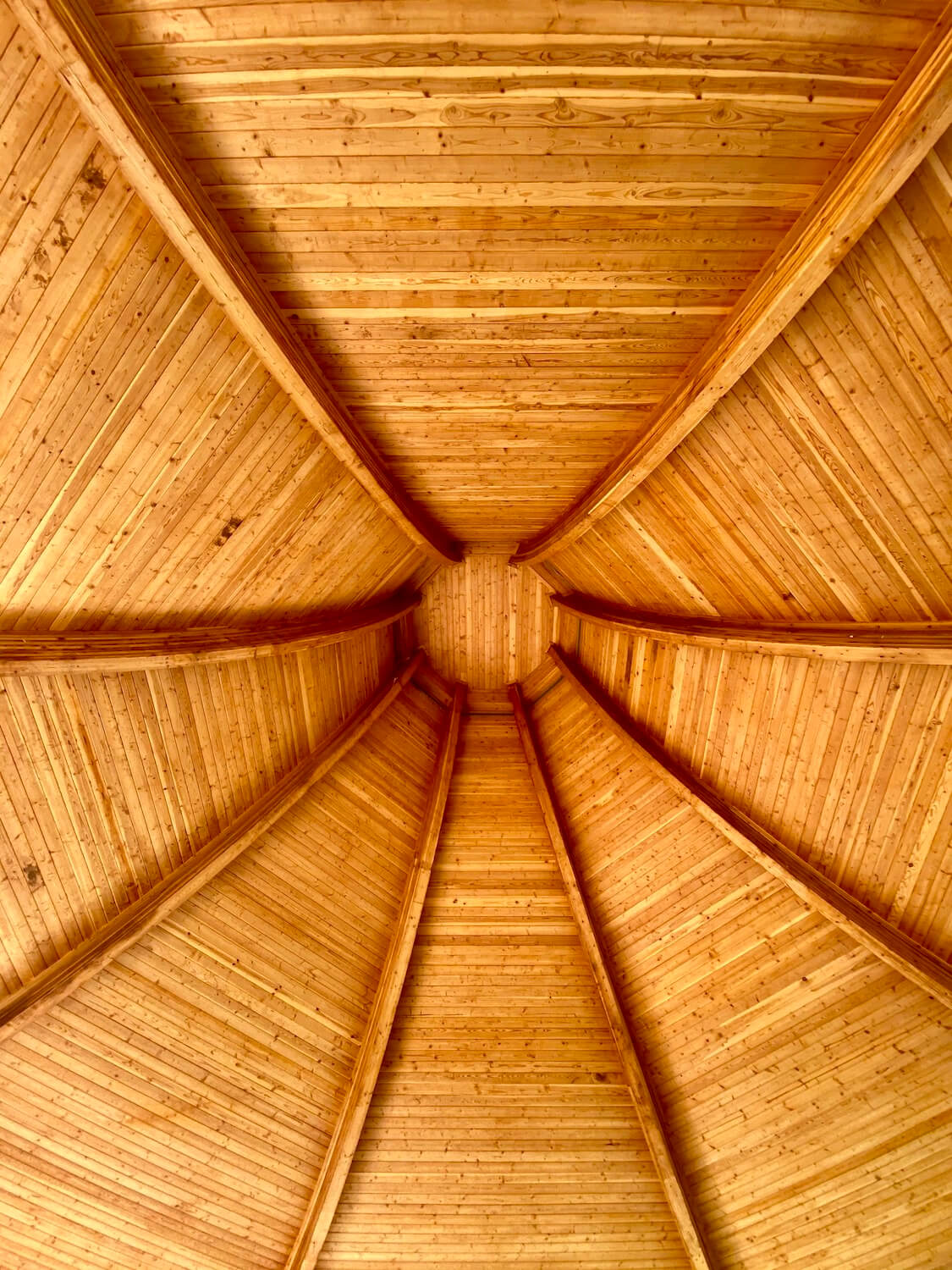
The watershed Point Elliott Treaty of 1855 ceded Salish Sea-area lands to non-native settlers and changed the lives of indigenous peoples forever. In 1867 a pioneer hamlet sprung up on land along the east bank of the Swinomish Channel and was originally given the same name — after the local tribe. In 1869, JC Conner bought the trading post and renamed the area for his wife Louisa Ann Conner. The LA comes from her first two initials. While the town of La Conner inhabits the east side of the Swinomish Channel, the Swinomish Village, part of the federally recognized Swinomish Indian Reservation, sits along the west bank of the water, encompassing 15 square miles including a golf course, a casino, and a fishery company.
Part of enjoying this beautiful area of Washington State (and any area of Washington State) is to foster awareness of the indigenous people who still maintain traditional ways of life important to ensuring their culture continues. A place to get started learning more about the Swinomish Tribe is this article about the 10 things you should know about the Swinomish Tribe.
I find the Swinomish Cedar Hats series of pavilions, and the affiliated interpretive panels and native-plant garden, an interesting place to stroll to take in a more hands-on approach to tribal culture. This space was created for the Canoe Journey event in 2011 and now serves as a venue for gatherings, including subsequent Canoe Journeys in the adjacent Swinomish Channel.
History comes alive — Salmon Bridge to National Register
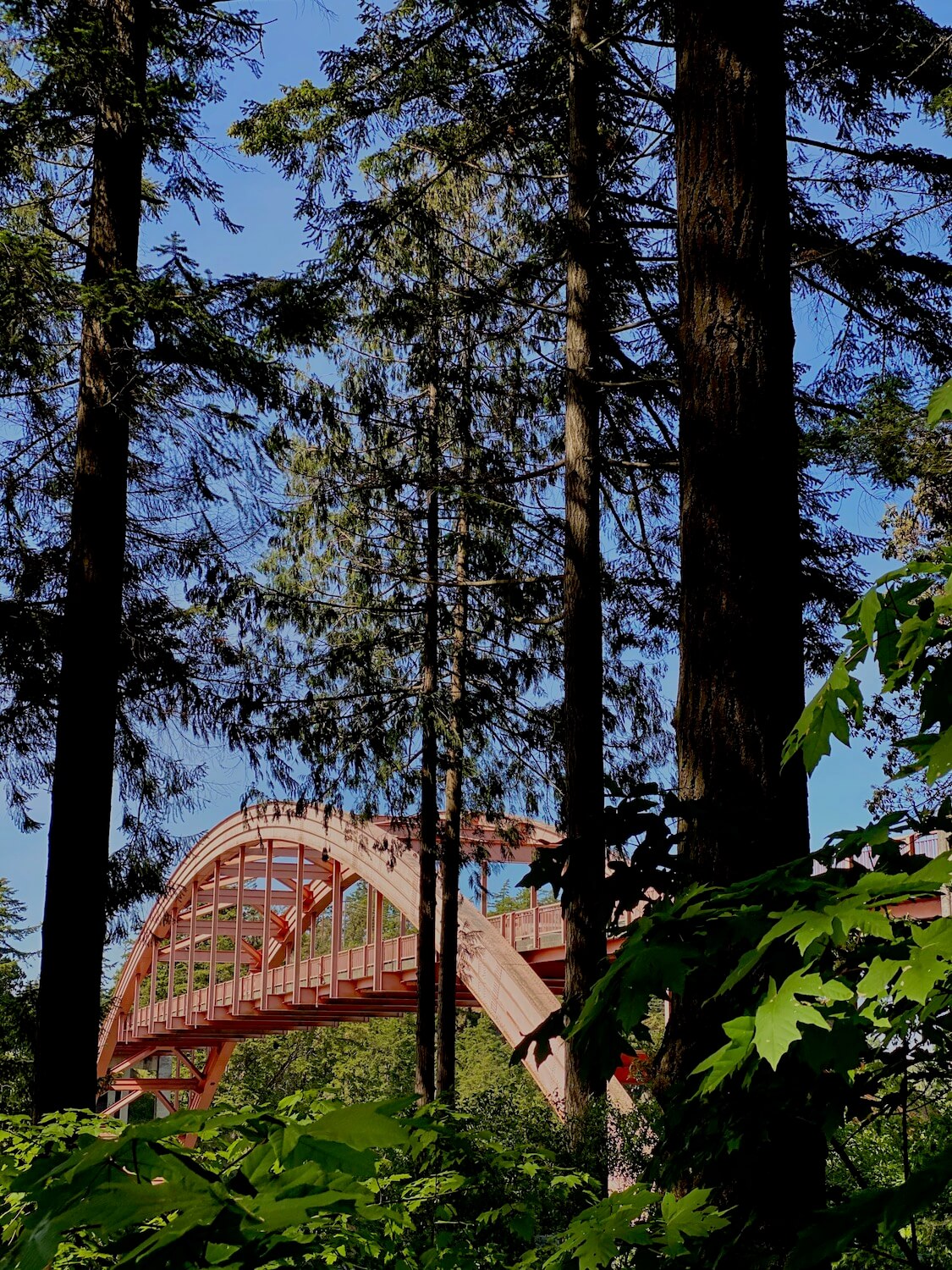
Salmon was the backbone of tribal life throughout the Pacific Northwest, including the local Swinomish Tribe whose name literally means “salmon people”. To honor this incredible sea creature with pink hues, the commanding erector-set like Rainbow Bridge made its debut in 1957 — connecting the town of La Conner, Washington with the Swinomish Village.
Other tributes and historic sites are evident throughout the area, including Pioneer Park, with views of the colorful bridge. The compact downtown area is on the National Register of Historic Places, complete with Western-style buildings. La Conner United Methodist Church overlooks the waterfront scene from a commanding presence atop the cliff. If you locate the giant cross-section of a douglas fir (near the public restrooms), try to count all the 800-plus rings on the tree, which was alive before the signing of the Magna Carta in 1215 AD.
Tulips to fruit stands — La Conner, WA is a cornucopia of agriculture
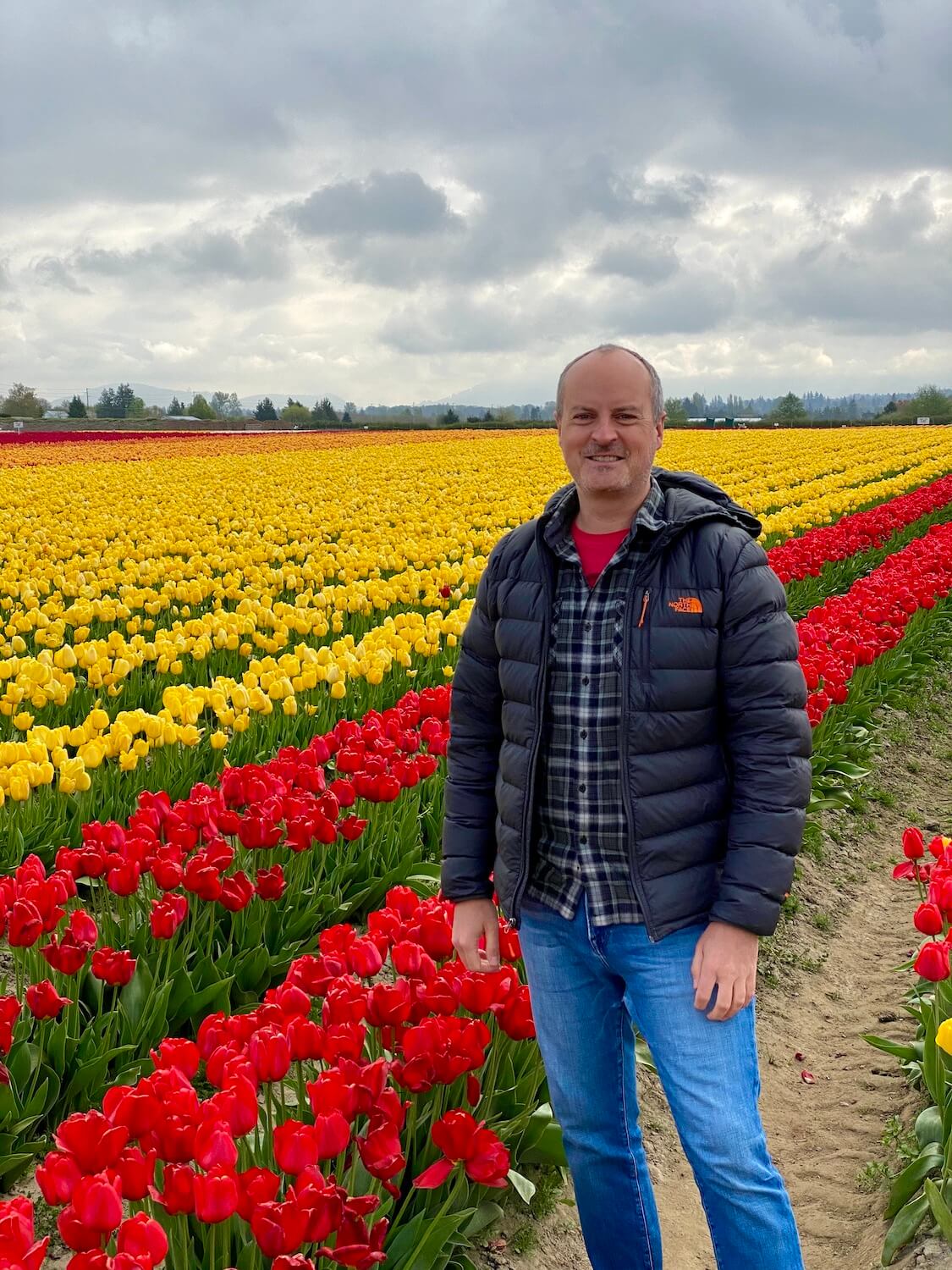
Every spring people from all over the world converge upon the Skagit Valley, chasing bright bulbs that push up their myriad of colors and textures. Tulips, daffodils, and lilies are the stars of the show, and the annual Skagit Valley Tulip Festival normally runs between April 1st – 30th. RoozenGaarde Flowers & Bulbs is a great place to start the adventure, and they are open year-round selling bulbs and flowers from an expansive system of greenhouses.
Don’t be discouraged if your visit doesn’t fall during this prolific flowering season, because the area continually lives and breathes agriculture. Scattered between the dairy farms, fields produce all kinds of produce that is on display in quintessential road-side stands — selling fruits, vegetables, honey and a myriad of other country staples.
Farm to table is real — La Conner, Washington food scene
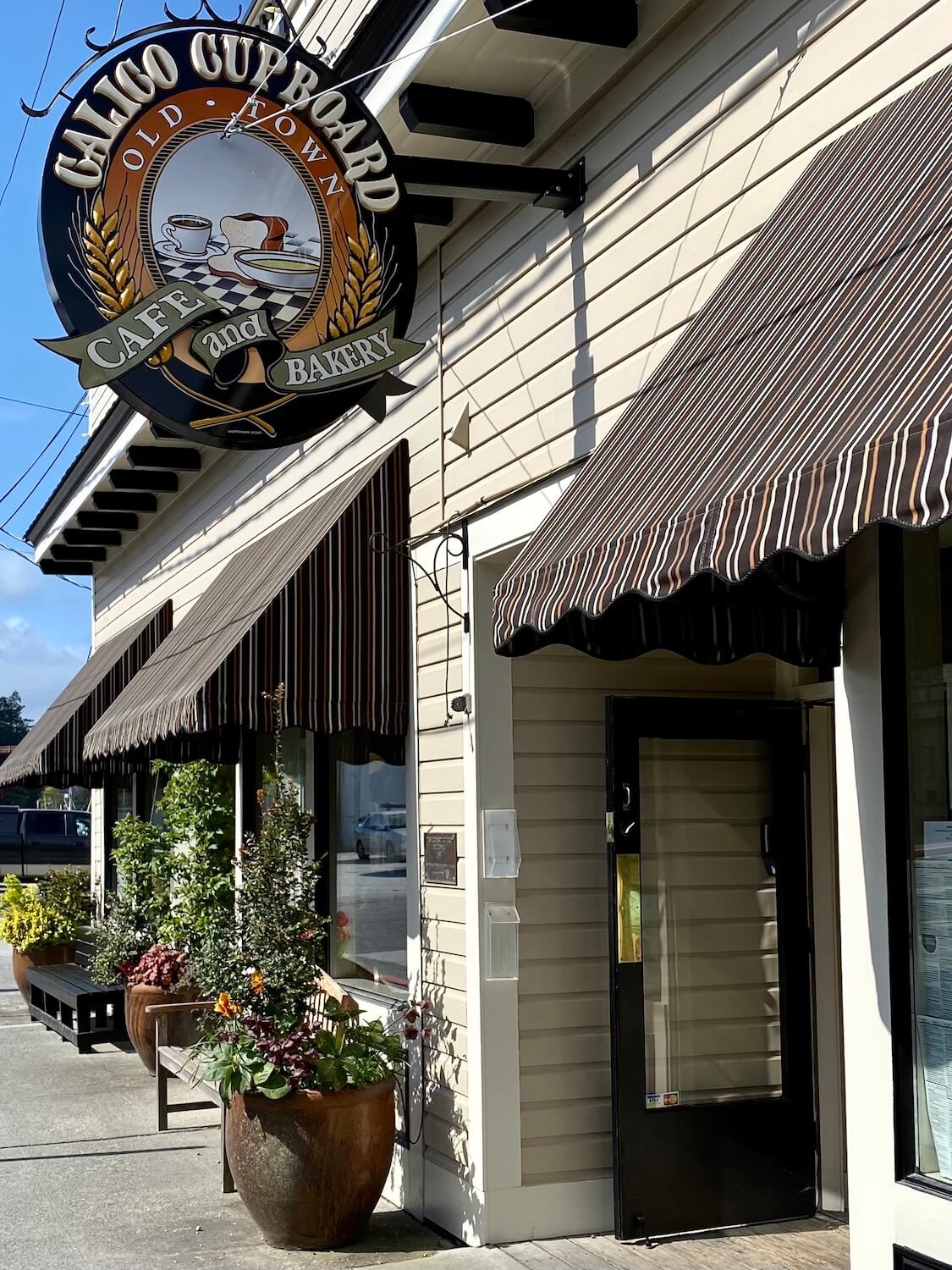
Many of these local food items show up on the quaint historic streets of La Conner, WA in a variety of ways. Calico Kitchen is a local favorite (with sister locations in Mount Vernon and Anacortes) for grub and great bakery goods, while Nell Thorn and Oyster & Thistle come highly recommended for meals later in the day.
Park in the downtown area and wander the boardwalk that hugs the Swinomish River, following the smells of nutritious goodness, until you find just the right spot. While the town swells with visitors around April’s tulips, the rest of the year the local eateries are easy to access.
In the eye of the beholder — shopping and culture in La Conner, Washington
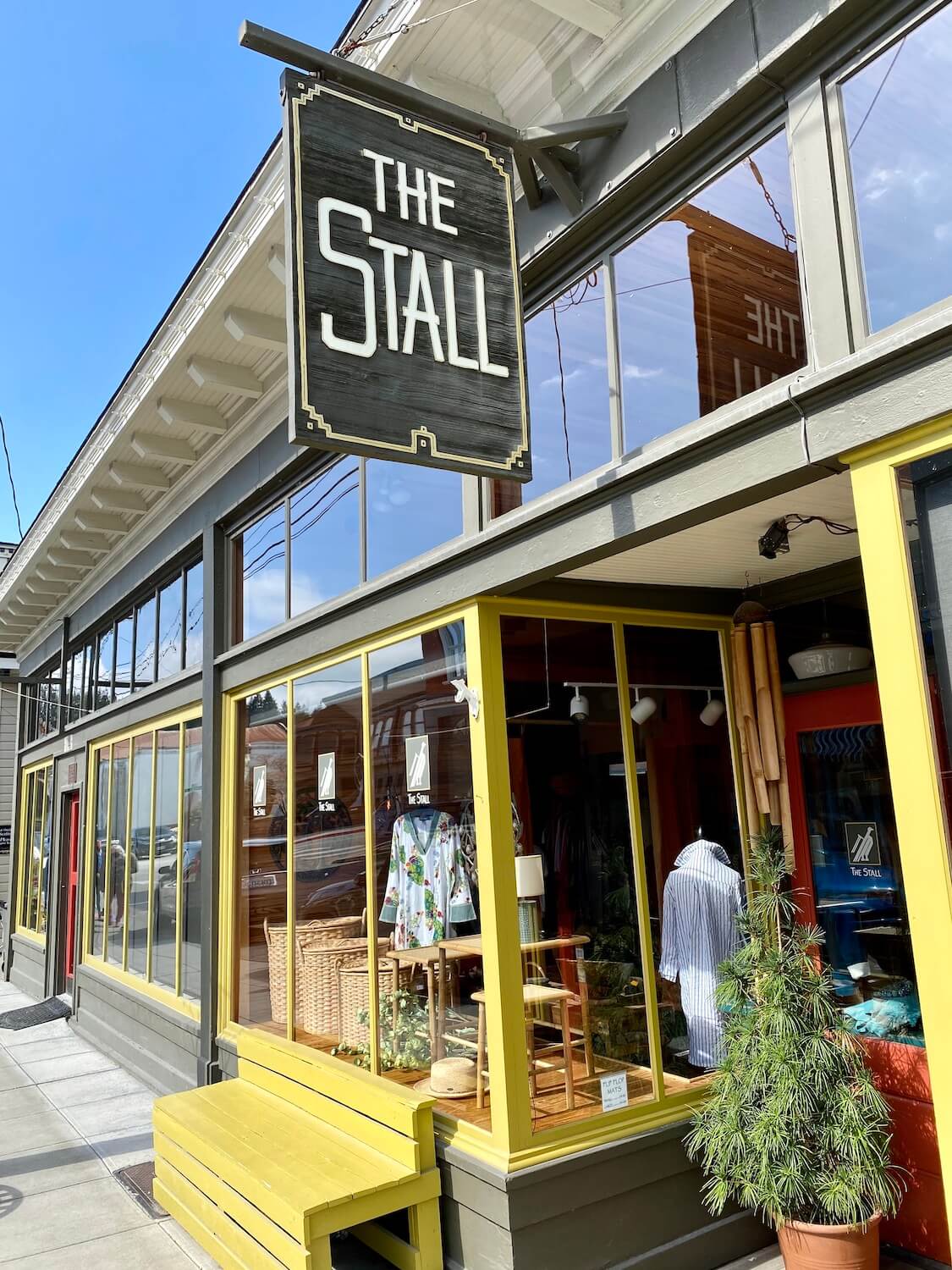
Living in such a beautiful spot must inspire the artists of the world to create stunning work, and La Conner does well with creative expression. Stroll the many shops in and around the boardwalk that create a patchwork-gallery feel, or visit one of the formal museums.
The Museum of Northwest Art (MoNA) offers world-class exhibits and free entry. Skagit County Historical Museum curates the history of the county in a captivating way and The La Conner Quilt & Textile Museum, housed in an elaborate 1891 Victorian mansion, is a blue-star museum that provides an interesting “spin” on the sewing arts.
Sail the Salish Sea
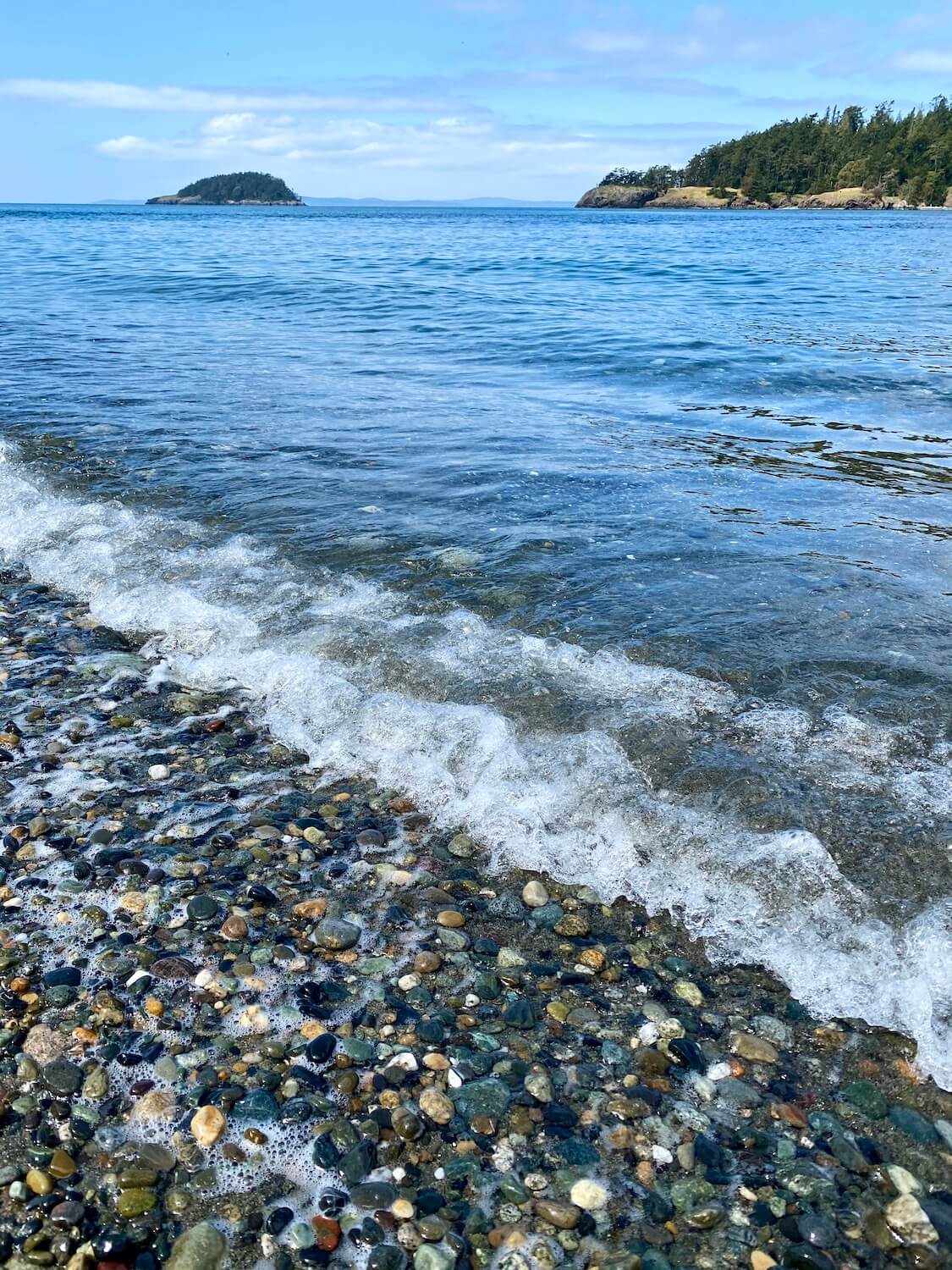
Twice a day, the salty tides of the Salish Sea flow in and out of this area, refreshing the abundance of life here. La Conner, Washington provides access to a variety of seafaring expeditions — to spot whales, fish or just sight-see from the sea. A popular option is Deception Pass Tours, leaving from a pier about 20 minutes from downtown La Conner on Highway 20. Their one-hour tour passes under the dramatic Deception Pass Bridge, giving you access to a completely different view of the iconic attraction — $34 per person (at the time of this writing, Summer 2021). Three-hour summer whale watching tours are also offered June-September and cost about $100/person. Skagit River Tours departs right from a marina in town bound for watery points North along the Swinomish Channel. Anacortes, WA, also provides a number of seabound choices, including whale watching options.
Just the day away — fun and easy road trips from a base in La Conner
La Conner is quiet and easy to navigate, making it an ideal spot to set up base for exploration around the area. I find that getting an early start helps beat the tulip and Summer crowds (mostly coming from Seattle for the day) no matter which direction you head. Even if making a day-trip from Seattle or other areas, consider combining a visit to La Conner with these three ideas listed below.
Deception Pass State Park (30 minutes away)

Whidbey Island is a long and narrow land mass in the middle of the Salish Sea, starting just North of the Seattle metro area (adjacent to Mukilteo) and ending very near La Conner, Washington. Last fall, I rented a Tesla and wrote the article, Tesla road trip — magic of the Puget Sound waters, about my road-trip around Whidbey Island. The piece includes a map with lots of ideas for things to do on this diverse island. While the South part of the island is dependent upon the Washington State Ferry System, Whidbey earned a roadway connection in 1935 with the completion of the Deception Pass Bridge, a Civilian Conservation Corps (CCC) engineering marvel of the day.
Today the bridge is a dramatic stop on the way to explore the fantastic and very popular Deception Pass State Park. Pull off the busy highway just on the other side of the bridge to walk across it and peer down. Be warned, this is not for the faint of heart and big trucks can make the span of metal bounce up and down. Parking anywhere in the park costs $10 per day (or the annual Discovery Pass, which is $30, where you buy hunting and fishing licenses) and passes can be purchased in machines that accept credit cards.

Explore North Beach and West Beach and the forests teeming with old growth in between. Look for majestic Douglas fir, Sitka spruce, and Western cedar, among other varieties. The smell of fir mixed with an alchemy of ferns, salal and other dense forest vegetation brighten the senses any time of year. Those up for a unique adventure should try ascending over 200 feet to the top of the old-growth tree canopy via rope and pulleys with Adventure Terra. This local guide company also offers other unique ways to experience the inspiring nature of the area, like sea kayaking.
On the return to La Conner be sure to check out the North shores of the park (on Fidalgo Island), as both Rosario Head and Lighthouse Point (accessible from Rosario Beach and Bowman Bay, respectively) offer less-crowded trails that hug rocky vistas with stunning views of Deception Pass Bridge (Lighthouse Point trail) and the Salish Sea/San Juan Islands (Rosario).
Anacortes, Washington (20 minutes away)
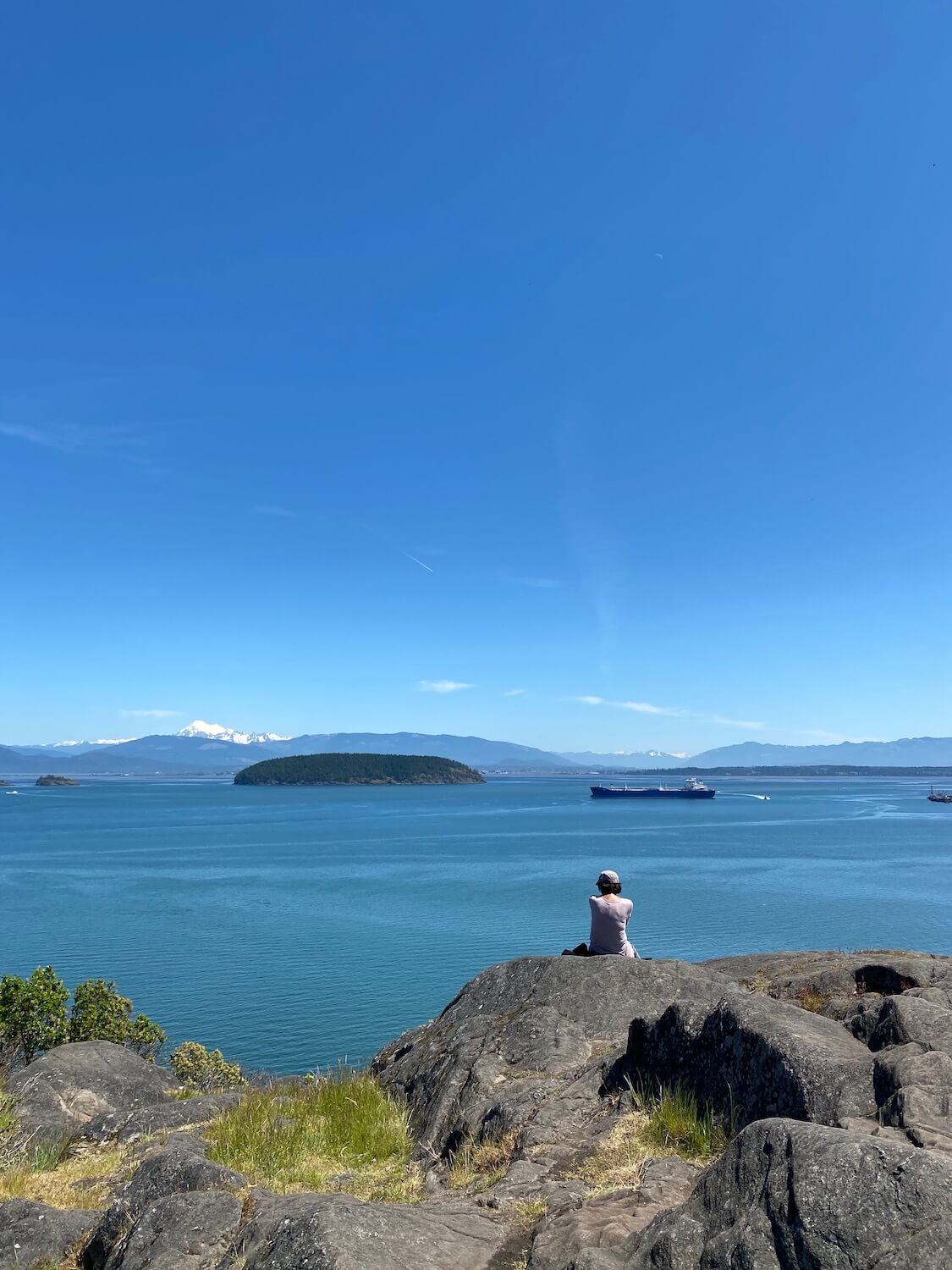
Most locals know this seafaring village as the terminus for Washington State Ferries to the beautiful San Juan Islands, as this is the go-to location for such a journey. However, this water-logged spot of land on the tip of Fidalgo Island is worth a deeper look. Learn more details in an article I wrote, Salty Day on the Salish Sea — day trip to Anacortes. Grab a picnic at The Store and head up to breathtaking views of Mt. Baker at Cap Sante (my favorite thing to do in Anacortes) or wind through the fabulous water vistas at Washington Park.
Seaside oysters and Larrabee State Park (30 minutes away)
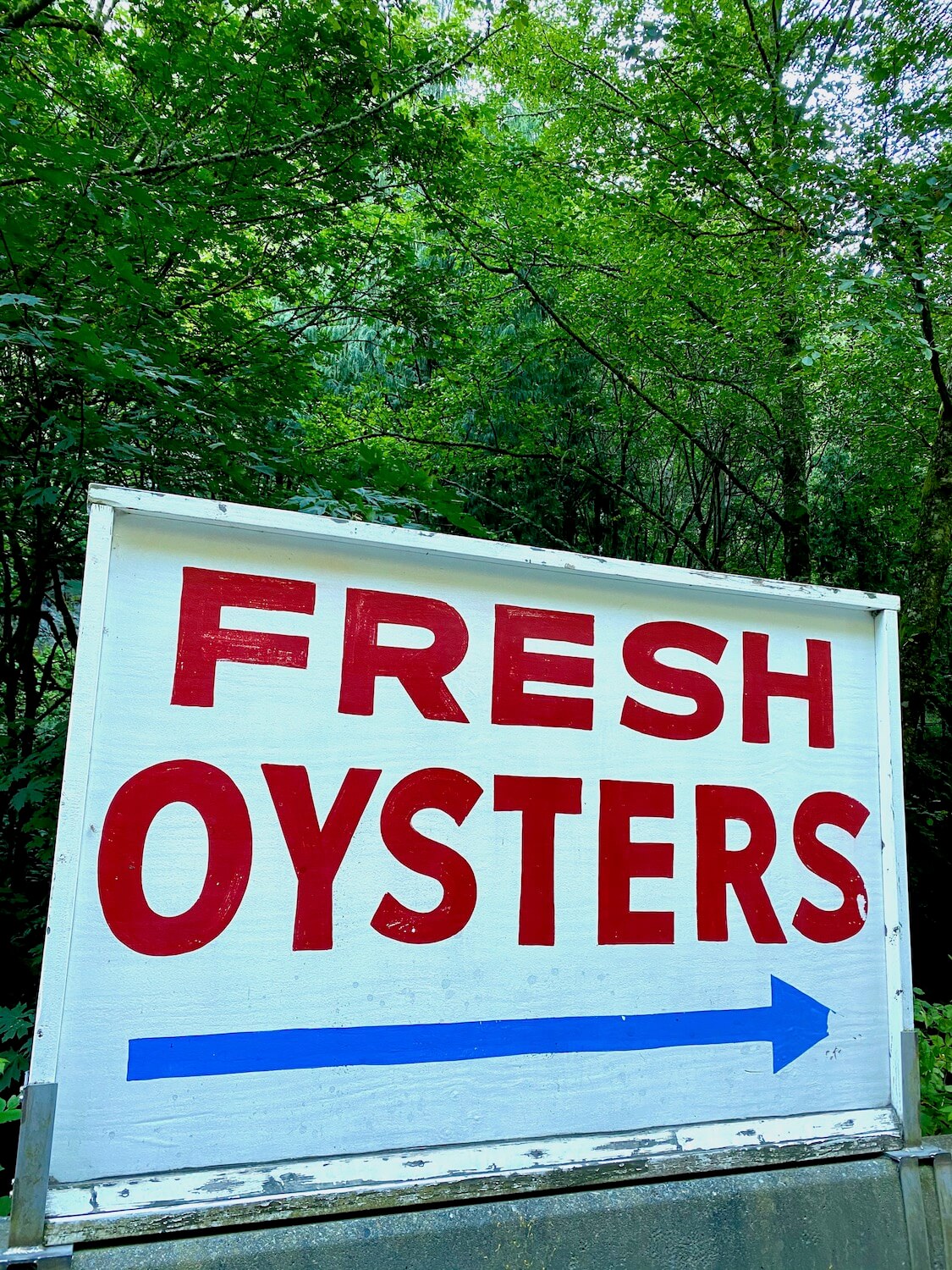
As the first Washington State Park, Larrabee State Park doesn’t disappoint. The wild nature area hosts bike trails and hikes suited for any fitness level and you can forage through coastal trails that lead to giant boulders that seem to bubble down to the foaming Salish Sea.
In this case, the journey is as great as the destination. The scenery from La Conner through tiny, cute Edison (worth a stop), and up Highway 11 to the State Park gives a feeling of peace and quiet that encourages the mind to clear. Taylor Shellfish is famous for oysters throughout the Seattle area but hosts guests at their flagship location, right on the banks of the Salish Sea, along this same highway. Chow down on the freshest seafood around while beer glasses clink to the tides lapping on the pebbly shore.
Map of La Conner, Washington and Skagit Valley
This map provides the driving itinerary for a specific recommended day-trip from Seattle that includes La Conner, WA, Deception Pass, and Anacortes. I’ve marked the map with great restaurants and places to stay, as well as my tried and true scenic locations around the area.
By the way, if you’re interested in other maps, I host all of mine on the Pacific Northwest Maps page, so take a look.
If you go — helpful planning information for La Conner, Washington and area

Getting to La Conner, Washington
La Conner is 67 miles from Downtown Seattle, and 89 from Vancouver, BC, making it near the center of the busy I5 corridor. A visit here can make an easy and enjoyable day-trip from Seattle, a break from the Seattle to Vancouver drive, or part of a larger road-trip covering the hot spots of Western Washington.
- From Seattle, take Interstate 5 North to exit #221 (Conway) and follow farm roads west (about 1:10 to 1:20).
- From Vancouver, BC, take Interstate 5 South to exit #230 (Burlington) and follow the main road west toward Anacortes, turning left at Whitney (1:50 depending on US Customs).
- From Bellingham, WA, while possible to take Interstate 5, the more enjoyable route is Highway 11 via Fairhaven and Edison, where you’ll turn onto scenic farm roads the rest of the way (about an hour).
- From Anacortes Ferry Terminal (coming from San Juan Islands), follow Highway 20 and turn right at Reservation Road (about 30 minutes).
Weather and when to visit La Conner
The Spring months around the famous Skagit Valley Tulip Festival (March to May) can be an optimum time to see the valley bursting with color, but the weather is also a mixed bag of rainy to cloudy skies and cool weather. Be sure to take a waterproof jacket (locals don’t use umbrellas and you’ll be laughed out of the field) and layers of clothing that can easily be peeled away as the day warms up.
Otherwise, Summer is a great time to visit the Skagit Valley because the weather is better and farm life is going full force. Mt. Baker is more cooperative in summer, providing stunning snow-capped views. This can be shorts and t-shirt weather, but remember layers — mornings and evenings are still cool.
The Fall harvest season offers pumpkins and other kinds of Autumn shenanigans that make the Skagit Valley a great option, and La Conner can serve as a great hub. I love the crisp mornings with just the ever-so-biting frost that drapes over corn stalks in the fields. Dress accordingly, especially with waterproof shoes if attempting any hiking or farm-life experiences.
Winter is peaceful and quiet, with the fields plowed during this dormant period. The charm of La Conner, Washington is that the Swinomish Channel provides interest even in this cold and dreary season, and Deception Pass State Park is picturesque any time of year — also way less crowded in Winter.
Places to stay in La Conner, Washington
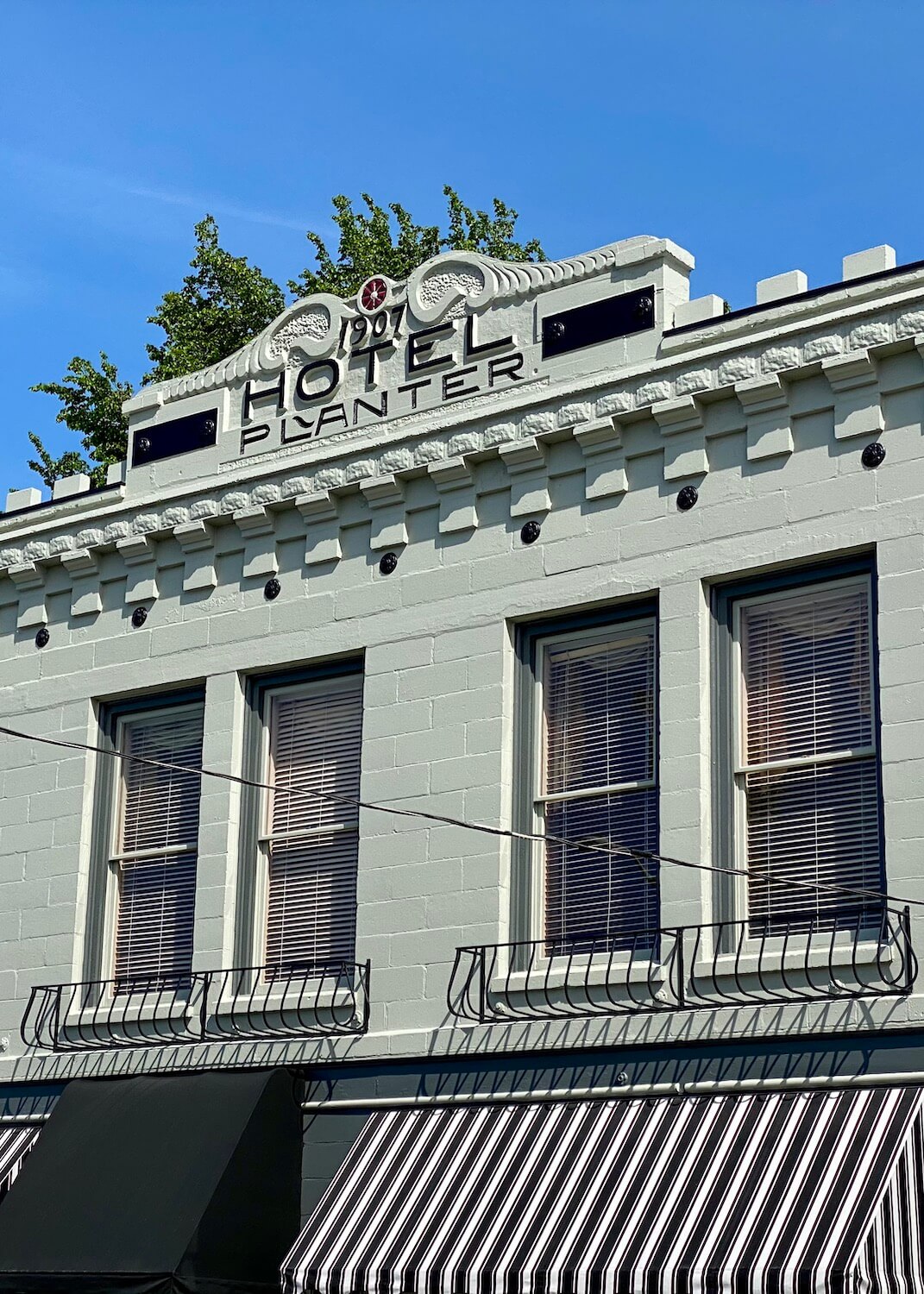
Being a small town with limited development, you won’t find many chain hotels in the area, which I think is well-suited to maintain the romantic feel of country charm. There are Airbnb’s and Bed and Breakfasts as well as a few small hotels (see map above). I find that staying near the historic core makes for a fun overnight or weekend to fully soak up the small-town vibe before and after day-trippers file into the area — Hotel Planter or Wild Iris Inn are two great places to start.

